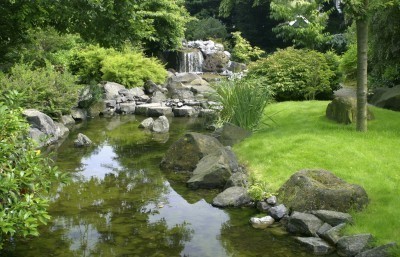






Some gardeners have a passion for growing specific plants. Others seek to improve the environment. There are gardeners that make creative use of limited space and those who simply enjoy a particular gardening style. Here are some of the most common types of gardens:
Perhaps you’re a nature buff, as most gardeners are. Consider a woodland, shade or wildflower garden. These specialty gardens offer special appeal and are a low-maintenance way to grow a variety of native plants and flowers.
If you enjoy tropical appeal, these gardens are also easy to create. Many common garden plants have tropical origins or characteristics such as:
Houseplants like dieffenbachia, palms, pothos, and croton can also be included.
Maybe water lulls your inner garden passion. A water garden can be as simple or as complex as you want it to be or as space will allow. These may include:
Water garden plants take several shapes and forms as well, including anything from oxygenating plants to water lilies and cattails, many of which can also be used for creating bog gardens. Bog gardens house a variety of moisture-loving plants and are also easy to create.
Water is an important part of Japanese gardens and may be represented in the form of subtle features, such as basins, or merely suggested ones like raked sand. Japanese gardens focus on detail with a respect for everyday objects found in nature.
Paths, groups of stones, specific plants, lanterns and wooden or bamboo structures (such as fences or bridges) are also common. Unlike most other gardens, emphasis is placed more on simplicity rather than an abundance of plant life.
If your passion is to save the environment, specialty gardens can range from xeriscape gardens to rain gardens and wildlife gardens.
Xeriscape gardens – Xeriscape gardens use low-maintenance, drought-tolerant plants that grouped together to form natural-looking landscapes, which conserve energy and water. There are numerous plants available, from annuals and perennials to grasses, shrubs and trees that will thrive in a xeriscape setting. Xeriscapes can be found in any style including rock gardens and desert or succulent gardens.
Rain gardens not only protect the quality of water but also welcome wildlife. A rain garden is a naturally shallow or dug out depression in the ground designed to catch rain that would otherwise turn into runoff; and with the addition of native plants, a rain garden can be an attractive landscaping feature.
Wildlife gardens can welcome an array of animals, such as pollinators, or simply a particular type, such as butterflies.
Permaculture gardens are also environmental and wildlife friendly.
Gardeners in the city also have options with specialty gardens. These may include rooftop gardening and container gardening.
Some gardeners plant special cutting gardens. These may consist of only a few plants in particular or numerous varieties. Flowering bulbs, perennials, annuals, ornamental grasses and many shrubs make excellent candidates for cutting.
A children’s garden is a great way to get the kids interested in gardening. Most of these gardens come with a theme of their choosing. Children have a natural gift of the imagination, and this is all that is needed. Themes can be based on a favorite game, story character, place, animal, hobby or even an educational focus.
Edible gardens can include anything from herb and vegetable gardens to edible flower and orchard gardens.
With so many specialty gardens to choose from, you’re certain to find a unique gardening style to fit the needs of any gardener.
Copyright © www.100flowers.win Botanic Garden All Rights Reserved